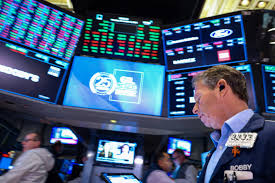Can Jerome Powell’s Fed survive the tariff shock and job market slump?

Jerome Powell. AI-generated image for illustration
As Federal Reserve Chair Jerome Powell prepares to deliver his final remarks before the Fed’s late-October policy meeting, investors and economists are bracing for signals on how the U.S. central bank will navigate a complicated economic landscape. The American economy is showing remarkable resilience — growth remains robust, and productivity has surged — yet underlying pressures tied to tariffs, immigration policies, and inflation continue to pose difficult questions for the Fed.
Powell’s Delicate Balancing Act in a Shifting Economy
In recent months, Powell has found himself at the center of an unusually tangled economic puzzle. On one hand, GDP estimates have been revised upward, with the Atlanta Fed’s GDPNow model predicting growth close to 4% for the third quarter. On the other, private sector reports suggest job creation has cooled, with payroll data showing employment slipping in September.
The ongoing U.S. government shutdown has further complicated the Fed’s data-driven decision-making process, delaying key reports like the September jobs data. For Powell and his colleagues, that means making critical rate decisions in the dark, relying instead on fragmented private-sector indicators.
An update on consumer prices is expected on October 24, just days before the Federal Open Market Committee (FOMC) convenes on October 28–29. Many analysts expect another quarter-point rate cut, bringing the benchmark rate down to the 3.75%–4.00% range — a move aimed at supporting the job market while still curbing inflation.
Economists Warn of Conflicting Forces at Play
At the National Association for Business Economics (NABE) conference, economists highlighted the conflicting dynamics shaping the U.S. economy. Gregory Daco, Chief Economist at EY-Parthenon, described the situation as “a duel of forces,” where AI investments are propelling productivity while tariffs and immigration limits constrain labor supply and growth.
These opposing trends have created a sense of economic tension. As Daco explained, the forces “aren’t necessarily offsetting one another in perfect sync,” suggesting that volatility could persist through the end of the year.
Policy Divide Within the Fed
Within the Fed itself, a policy divide has emerged. Some officials remain wary that inflation, currently hovering above the 2% target, could stay elevated well into 2026, especially as the effects of tariffs and supply-chain shifts ripple through consumer prices. Others, like Fed Governor Christopher Waller, worry that aggressive restraint could trigger a sharp rise in unemployment.
Waller, speaking recently on CNBC, pointed out the inconsistency between strong GDP projections and weak job numbers, cautioning that “something’s got to give.” His stance supports further rate cuts — but executed carefully — to prevent policy missteps.
AI, Productivity, and the Risk of Overconfidence
Despite these challenges, some policymakers see a silver lining in the ongoing AI-driven productivity boom. According to Philadelphia Fed President Anna Paulson, innovation and high-end consumer spending are sustaining growth, even as traditional sectors slow down. However, she warns that this growth is “resting on a relatively narrow base,” making the economy vulnerable to shocks.
Paulson, echoing Powell’s measured tone, believes two additional quarter-point cuts this year would be “appropriate” to safeguard growth without derailing potential productivity gains.
Tariffs, Inflation, and What Comes Next
The broader question looming over Powell’s upcoming speech is whether the Fed can successfully guide the economy through what some economists call a “policy storm.” Tariffs imposed under President Trump’s administration continue to influence pricing structures, while firms attempt to absorb the added costs through efficiency improvements and short-term productivity gains.
Still, many analysts warn that price pressures are building. A National Association for Business Economics forecast sees inflation sticking at around 2.5% through 2026, while Karen Dynan, a senior fellow at the Peterson Institute for International Economics, projects it could climb as high as 3.3% once tariff costs reach consumers.
Dynan cautioned that the Fed’s strategy of incremental cuts could backfire if inflation expectations become unanchored, saying, “There’s a real risk that markets will see continued easing as a mistake.”
As Jerome Powell prepares to step onto the podium, the stakes couldn’t be higher. His message — and the market’s interpretation of it — could shape the direction of U.S. monetary policy for months to come. The Fed’s challenge is no longer just fighting inflation or preserving jobs; it’s about steering an economy caught between technological transformation and geopolitical tension.




